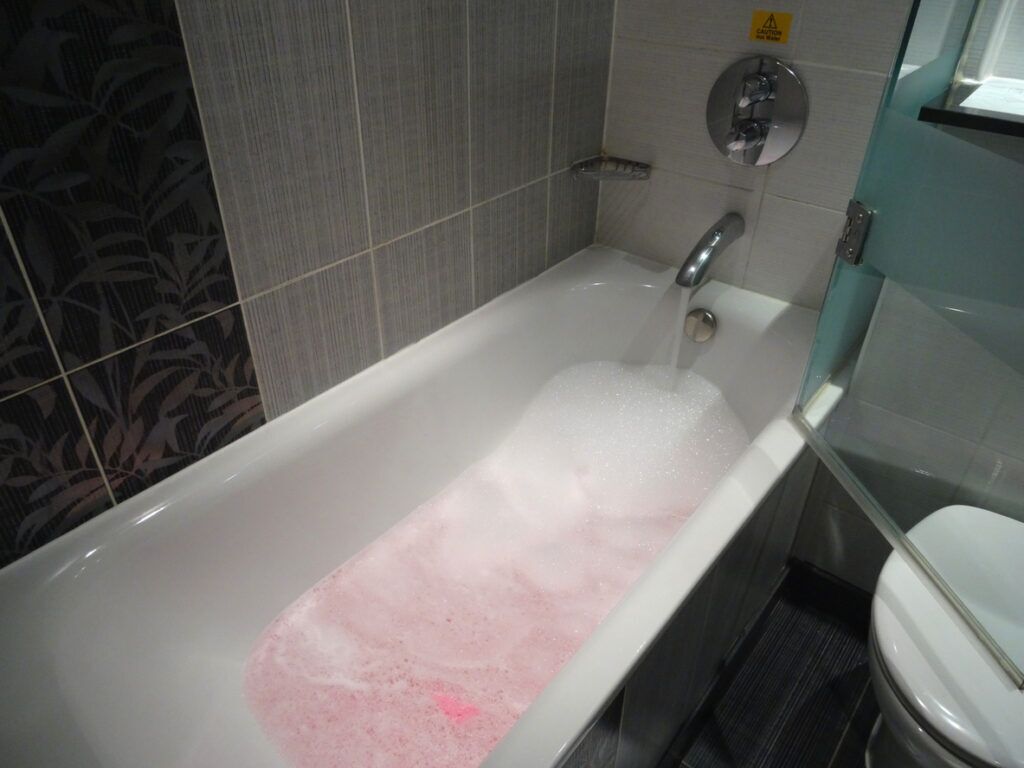Key Explanations for Drainage in the Bathtub
Key Explanations for Drainage in the Bathtub
Blog Article
Just how do you feel when it comes to Why sewage is coming up through your bathtub?

Sewer back-up in the bath tub can be a traumatic and unhygienic issue for any kind of homeowner. Not only is it bothersome, yet it likewise postures serious wellness dangers and suggests underlying issues with the plumbing system. Comprehending why sewage is showing up through the bath tub is important for taking suitable action to resolve the trouble efficiently.
Introduction to the Problem
Recognizing the Issue
When sewage starts backing up into the bath tub, it's a clear indicator of a trouble with the drainage system. The wastewater that ought to be moving far from your home is rather discovering its way back into your space, which can bring about significant damages and carcinogen.
Potential Causes
A number of aspects can add to sewer back-up in the tub. From obstructions in the sewage system line to concerns with the plumbing infrastructure, identifying the root cause is essential for finding an option.
Usual Reasons for Sewer Back-up
Clogs in the Sewage System Line
One of the most usual sources of sewage backup is a clog in the drain line. This can take place because of the build-up of debris, oil, or international things in the pipelines, stopping appropriate circulation and creating sewer to support into your tub.
Tree Root Invasion
Tree roots seeking wetness and nutrients can infiltrate drain lines with little splits or joints. Over time, these roots can expand and broaden, creating significant damages to the pipelines and causing sewer back-up problems.
Aging Facilities
Older homes might have obsoleted plumbing systems that are more vulnerable to corrosion, splits, and wear and tear. As pipelines age, they end up being more susceptible to leaks and blockages, enhancing the chance of sewage back-up incidents.
Heavy Rainfall or Flooding
Throughout periods of heavy rainfall or flooding, the sewer system might end up being overloaded with excess water, causing backups and overflows. This can result in sewage supporting into bath tubs and other fixtures inside the home.
Wellness Threats Connected With Sewer Backup
Contamination of Supply Of Water
Sewage backup can infect the supply of water in your home, posturing a significant health and wellness threat to you and your family. Exposure to contaminated water can cause gastrointestinal problems, skin infections, and other health problems.
Spread of Disease
Sewer consists of hazardous bacteria, viruses, and bloodsuckers that can trigger a range of conditions, including liver disease, cholera, and gastroenteritis. Entering contact with sewage or contaminated surfaces places you in danger of infection.
Mold and mildew Growth
Dampness from sewer back-up can develop perfect conditions for mold growth in your home. Mold spores can intensify respiratory system issues and cause allergic reactions in sensitive people, making punctual cleanup crucial.
Indications of Sewage Back-up
Foul Odors
Undesirable smells originating from drains pipes or fixtures, particularly in the restroom, might indicate sewage back-up issues. These smells are commonly solid and persistent, signaling a trouble that requires instant focus.
Slow Draining Fixtures
Bath tubs, sinks, and commodes that drain pipes gradually or otherwise in all could be experiencing sewage backup. If multiple components are impacted concurrently, it's likely that the issue originates from a typical point, such as the major sewer line.
Gurgling Noises
Unusual gurgling or gurgling sounds coming from drains when water is running elsewhere in your home are a sign of air trapped in the plumbing system. This air build-up can arise from sewer back-up and should be investigated promptly.
Immediate Actions to Take
Switching Off Supply Of Water
In the event of sewage back-up, it's vital to shut off the water supply to stop additional contamination and damages. Find the main water shutoff valve in your home and closed it off up until the problem can be dealt with.
Calling a Professional Plumber
Handling sewer backup is not a do it yourself job. Contact an accredited plumber with experience in dealing with sewage-related issues to examine the situation and do needed repairs or cleanings.
Staying Clear Of Contact with Polluted Water
Till the sewer back-up is dealt with, avoid contact with contaminated water to avoid the spread of microorganisms and pathogens. Use safety equipment if you have to remain in the damaged location and wash your hands extensively later.
Safety nets
Normal Upkeep of Drain Lines
Arrange routine evaluations and maintenance of your sewer lines to determine and address potential problems before they rise right into major issues. This can include cleaning out particles, evaluating for tree root breach, and repairing any kind of damaged pipes.
Mounting Bayou Valves
Take into consideration setting up backwater shutoffs in your plumbing system to prevent sewer from receding into your home throughout periods of heavy rainfall or flooding. These valves automatically close when water starts backing up, protecting your property from contamination.
Proper Disposal of House Waste
Prevent purging anything besides toilet tissue and human waste down the toilet to avoid blockages and obstructions in the sewer line. Dispose of grease, oil, and other household chemicals correctly to reduce the danger of plumbing issues.
Tidying up After Sewage Back-up
Sanitation Procedures
Extensively sanitize and sterilize affected areas after sewer back-up to get rid of unsafe germs and avoid mold development. Usage appropriate cleansing products and protective equipment to ensure safe and reliable cleaning.
Repair of Impacted Areas
Fix any kind of damages to floor covering, wall surfaces, or fixtures triggered by sewer back-up. Depending on the level of the damages, you may require to change carpeting, drywall, or other materials to restore your home to its pre-loss problem.
Why is Sewage Coming Up Through Your Bathtub?
Reasons You May Have Sewage in Your Bathtub
All the drains in your home lead down different pipes to get to the main sewer line. If you’re seeing sewage in the bathtub, the problem is that the main sewer line is clogged up, which is causing the water running through other drains to be pushed back into other pipes. The problem isn’t the bathtub, but the main line. The sewer line can get backed up by anything that goes down the drain, from food waste, hair and soap particles to jewelry or children’s toys. Tree branches or dirt can also impact the sewer line. If you’re seeing sewage in the bathtub, you have a big problem that usually needs a professional plumber. Trying to fix this problem without the right tools or knowledge can lead to bigger plumbing problems.
Fixing a Clogged Sewage Line
Although you shouldn’t try to fix the clogged sewer line on your own, you may be able to mitigate the issue until you can get a plumber to your home. A plunger isn’t going to help, because it won’t be able to reach the sewage drain to unblock the problem.
Turn Off Water
Find the main shutoff valve to your home to turn off the water. This prevents more water from going down the drain which is only going to flow back into your bathtub.
Snake the Toilet and Drain
Start by using a drain pipe snake to clean out the toilet drain. Rotate the snake clockwise when you push the snake down. As you pull it out, the snake should spin counterclockwise. Follow up by snaking out the bathtub drain. If you are successful, both the toilet and shower will drain efficiently. If you’re not successful, you probably have a bigger problem than your tools and experience can manage.
Contact a Professional Plumber
Pros have the tools to find the source of the problem and the experience to manage big blockages without causing more damage to your pipes. It can save you a lot of stress by contacting the professionals sooner rather than later.
Identify the Early Signs of a Clogged Sewage Line
If you’re gearing up for a holiday family gathering or just want to avoid the hassle of a clogged sewage line in your home, make sure you recognize the signs of a clogged sewer line.
Slow drains are a sign of a sewer line problem. Gurgling drains from any drain in your home indicate that you may have an obstruction in the drains. If your toilet keeps getting clogged, it might be a problem with the sewer line. When you see laundry water or water from the dishwasher in different sinks in the home, it’s an indication that your sewer drain is beginning to get backed up. These symptoms can often be “fixed” temporarily to get through a day or week before you start seeing the same problem. When it comes to plumbing problems, you want to fix the root of the problem instead of muddling through. The clog will not go away on its own.
https://handymanconnection.com/mississauga/articles/why-is-sewage-coming-up-through-your-bathtub/

We were shown that article on through an associate on our other site. Sharing is caring. Helping people is fun. Thanks for your time. Kindly come visit our site back soon.
Rates
Report this page